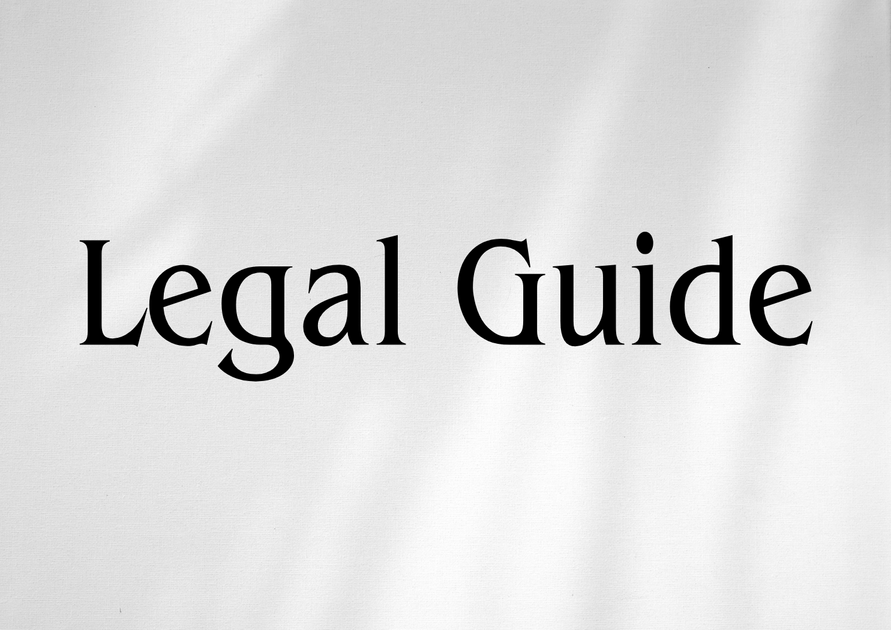Introduction: Understanding Sukuk Regulation in Qatar and Its Importance for UAE Stakeholders
As Qatar continues to cement its position as a leading financial hub in the GCC, the regulation of sukuk, or Islamic bonds, has emerged as a subject of growing strategic importance. With cross-border investments between the UAE and Qatar surging, and Islamic finance expanding as a preferred alternative for ethical funding, businesses and legal practitioners must understand how Qatar’s legal framework for sukuk operates—and how it can affect investment decisions, compliance planning, and overall risk management in 2024 and beyond.
For UAE-based corporates, executives, and legal professionals, this analysis is particularly timely. Key developments in Qatari capital markets, as well as recent updates in UAE federal regulations affecting cross-border financial instruments, mean that a forensic understanding of sukuk law is more than an academic concern: it is a crucial factor in ensuring compliance, reducing risk, and unlocking new growth opportunities.
This article delivers a comprehensive, consultancy-grade exploration of Qatar’s sukuk regulations. Drawing on official Qatari and UAE legal sources, we analyze the statutory framework, provide actionable insights, highlight recent legal updates, and offer real-world guidance for businesses navigating the evolving regulatory landscape. Whether you are contemplating an Islamic bond issuance, investing in Qatari sukuk, or advising clients on both Qatari and UAE legal compliance, this guide is designed to equip you with the knowledge and practical know-how you need.
Table of Contents
- Overview of Qatari Sukuk Regulation
- Key Legal Sources and Institutions
- Core Legal Provisions for Sukuk Issuance
- Comparative Table: Sukuk Regulation Then and Now
- Integration with UAE Law and Cross-Border Implications
- Compliance Risks and Enforcement Strategies
- Case Study: Sukuk Issuance in Practice
- Practical Guidance and Best Practices
- Conclusion: Future Trends and Strategic Recommendations
Overview of Qatari Sukuk Regulation
The Growth of Islamic Finance in Qatar
Qatar has established itself as a key jurisdiction for the development and issuance of sukuk. These Sharia-compliant financial instruments are central to both governmental and private sector financing, offering investors ethical alternatives to conventional bonds. The expansion is driven by Qatar’s commitment to Islamic finance, the presence of well-developed capital markets, and robust regulatory oversight designed to attract foreign investment and solidify confidence in the market.
Why Sukuk Regulation Matters for the UAE
Many UAE-based investors, banks, and corporates are directly or indirectly exposed to Qatari sukuk markets. Whether through direct investment, collaborative financing initiatives, or secondary market activities, understanding the nuances of Qatari sukuk law is essential for:
- Mitigating legal and financial risk
- Ensuring Sharia compliance and regulatory harmony
- Optimizing cross-border transaction efficiency
- Maximizing return on investment within compliant frameworks
Key Legal Sources and Institutions
Principal Laws and Regulations
Qatar’s regulatory landscape for sukuk is shaped primarily by the following legal sources:
| Legal Instrument | Reference | Area of Coverage |
|---|---|---|
| Qatar Central Bank Law | Law No. 13 of 2012 (amended by Law No. 20 of 2017) | Overall supervision and regulation of financial markets and instruments, including sukuk. |
| Qatar Financial Markets Authority (QFMA) Sukuk Guidelines | QFMA Sukuk Issuance Rules 2013 (latest amendments in 2021) | Specific provisions for sukuk structure, disclosure, and investor protection. |
| Qatar Financial Centre (QFC) Regulatory Framework | QFC Financial Services Regulations, including the QFC Islamic Finance Rules 2005 | Compliance and issuance within the QFC jurisdiction, facilitating international issuances. |
Regulatory Institutions
- Qatari Central Bank (QCB): The primary regulator, overseeing all issuance and compliance.
- Qatar Financial Markets Authority (QFMA): Supervises public offerings, listing, and investor disclosure for sukuk on Qatari exchanges.
- Qatar Financial Centre Regulatory Authority (QFCRA): Provides a specialized regime for international issuers within the QFC.
- Sharia Supervisory Boards: Ensure each sukuk complies with Sharia principles, a critical component for validity.
Core Legal Provisions for Sukuk Issuance
1. Eligibility and Ethical Criteria
Sukuk issuers in Qatar must satisfy rigorous eligibility requirements, both at the entity and instrument level:
- Corporate Form: Only joint-stock companies or QFC-registered entities may issue public sukuk.
- Sharia Compliance: Issuances must pass scrutiny by a Sharia Supervisory Board, both initially and throughout the sukuk’s lifecycle.
- No Prohibited Activities: Under Article 15 of the QFMA Sukuk Issuance Rules, funds raised may not be used for activities contrary to Sharia, such as gambling, alcohol, or conventional banking interest.
2. Structuring and Documentation Requirements
The core features of Qatari sukuk structuring include:
- Asset-Backed vs. Asset-Based: Qatari law distinguishes clearly between ‘asset-backed’ and ‘asset-based’ sukuk, affecting risk transfer and default recourse.
- Mandatory Disclosure: Detailed offering documents must be lodged with the QFMA, including risk factors, transaction structures, and Sharia compliance statements (Article 22, QFMA Rules).
- Independent Trustees: Trustees must operate independently of the issuer to protect investor rights, per Article 17 of the Sukuk Rules.
- Ongoing Reporting: Regular disclosures and Sharia compliance confirmations are required throughout the sukuk tenure.
3. Registration, Listing, and Trading
- Primary Listing: All public sukuk must be listed on the Qatar Stock Exchange or an approved alternative market (Article 38, QFMA). Private placements are possible but subject to different scrutiny.
- Notification and Approval: Issuers are subject to prior notification and express approval by the QFMA and QCB before launching a sukuk.
- Secondary Market Trading: Rules ensure that sukuk can be freely traded among eligible investors, provided ongoing compliance standards are met.
Comparative Table: Sukuk Regulation Then and Now
Recent amendments in Qatari law (notably the 2021 QFMA update) have refined and enhanced regulatory requirements. The following table sets out the principal divergences:
| Aspect | Pre-2021 Regulation | Post-2021 Amendments |
|---|---|---|
| Sharia Oversight | Individual board per issuer | Mandatory registration of boards, standardization of Sharia processes |
| Trust Structure | Optional trustee, limited reporting | Independent trustee now mandatory, robust reporting obligations |
| Disclosure | Basic offering document | Comprehensive risk disclosure, ongoing reports to QFMA |
| Secondary Trading | Restricted liquidity for certain sukuk | Permitted for all QFMA-approved sukuk |
| Penalties | Ad hoc enforcement | Standard scale of administrative fines, enhanced enforcement powers |
Integration with UAE Law and Cross-Border Implications
Legal Context for the UAE: Federal Decree Reference
Given the strong bilateral investment flows between Qatar and the UAE, many UAE-based businesses have a direct interest in the compliance implications of issuing or investing in Qatari sukuk. Since the enactment of Federal Decree-Law No. (14) of 2018 on the Central Bank & Organization of Financial Institutions and Activities in the UAE and its implementing regulations, cross-border activities are more strictly regulated, especially as of the 2025 updates.
Key Points of Intersection:
- Equivalency Tests: UAE law recognizes certain Qatari-regulated sukuk structures as equivalent, allowing streamlined marketing and investment by UAE entities (Cabinet Decision No. 74 of 2020, updated for 2025).
- Sharia Board Coordination: UAE and Qatari authorities share information under MoUs, ensuring consistent Sharia compliance assessments for multi-jurisdictional offerings.
- Anti-Money Laundering (AML) and Counter-Terrorist Financing (CTF): UAE’s Central Bank and QCB both require dual reporting frameworks for cross-border issuances, significantly raising compliance stakes.
Practical Example: UAE Issuer Seeking Qatari Sukuk Listing
A UAE-based joint-stock company aiming to issue sukuk for listing on the Qatar Stock Exchange must undergo dual regulatory review:
- Secure approval from the UAE Central Bank under Federal Decree-Law No. 14 of 2018
- Obtain QFMA and QCB approval per Qatari Sukuk Guidelines
- Comply with both AML/CTF reporting regimes, submit dual disclosure documents, and maintain ongoing audits as per Article 45 of the QFMA rules
Compliance Risks and Enforcement Strategies
Risks of Non-Compliance
Non-compliance with Qatari sukuk regulations carries material legal and financial consequences. The QFMA has absolute discretion to apply the following sanctions (as revised in the 2021 update):
- Fines: Administrative fines up to QAR 2 million per breach (see QFMA enforcement schedule, 2021).
- Trading Suspension: Immediate suspension or delisting of sukuk from the exchange.
- Director Liability: Directors and senior officers may face bans from capital markets activity for up to 10 years.
- Investor Compensation Orders: Potential civil liability for misleading or insufficient disclosure.
Pro Tip: UAE legal advisors should integrate Qatari regulatory compliance into internal audit, training, and governance protocols—especially when structuring or advising on cross-border sukuk.
Compliance Strategies for UAE Stakeholders
| Compliance Requirement | Recommended Strategy |
|---|---|
| Sharia Certification | Engage independently recognized Sharia advisors certified in both UAE and Qatar |
| Disclosure Obligations | Use standardized, bilingual offering documents reviewed by both jurisdictions’ counsel |
| Ongoing Monitoring | Implement annual compliance audits, continuous training, and designated compliance officers |
| AML/CTF Reporting | Establish robust KYC, transaction monitoring, and dual reporting lines to both UAE and Qatari regulators |
Case Study: Sukuk Issuance in Practice
Hypothetical Example: UAE Corporate Sukuk in Qatar
- Step 1: ABC Development PJSC (UAE) seeks to raise QAR 1 billion via a sukuk listed on the Qatar Stock Exchange.
- Step 2: ABC forms an issuance SPV registered within the Qatar Financial Centre and appoints a joint Sharia Board.
- Step 3: The company prepares an offering circular, disclosing all material risks, Sharia compliance codes, and beneficial ownership structures as per Article 22, QFMA.
- Step 4: Pre-launch regulatory approval is secured from the QFMA and parallel sign-off from the UAE Central Bank.
- Step 5: Periodic reports are filed to both regulators; ABC implements dual AML/CTF controls as per both countries’ protocols.
- Outcome: The sukuk is successfully listed and traded. ABC avoids regulatory penalties and creates a replicable compliance template for future issuances.
Visual Suggestion: A process flow diagram illustrating these steps could be added for visitor clarity and engagement.
Practical Guidance and Best Practices
Key Steps for UAE Businesses and Legal Advisors
- Early Legal Engagement: Engage expert counsel familiar with both jurisdictions at the project’s outset.
- Document Standardization: Harmonize offering and disclosure templates to satisfy both Qatari and UAE regulators.
- Stakeholder Training: Mandate periodic training for all personnel involved in structuring, issuing, or marketing sukuk.
- Technology Integration: Deploy RegTech solutions for real-time monitoring and cross-border reporting.
- Continuous Monitoring: Institute quarterly compliance reviews and maintain clear records for audit trails.
Checklist: Qatari Sukuk Compliance for UAE Stakeholders
| Task | Status (✔/✖) |
|---|---|
| Secured Sharia certification by recognized board | |
| Regulatory approvals from both QFMA and UAE Central Bank | |
| Bilingual, comprehensive disclosure documentation filed | |
| AML/CTF frameworks adopted and audited | |
| Ongoing compliance monitoring mechanisms in place |
Visual Suggestion: A downloadable compliance checklist or audit template can enhance value for in-house counsel and compliance officers.
Conclusion: Future Trends and Strategic Recommendations
The regulation of sukuk in Qatar is rapidly evolving, with ever-increasing regulatory sophistication and alignment with international standards. For UAE entities and advisers, a deep and current understanding of these rules is not merely advantageous—it is essential for legal compliance, commercial efficiency, and sustainable growth.
Looking ahead, several trends are likely to dominate:
- Ongoing regulatory updates as Qatar and the UAE harmonize disclosure and compliance requirements
- Increased enforcement activity targeting disclosure failures and Sharia non-compliance
- Opportunities for innovative sukuk structures (e.g., green sukuk) as regulators adapt to ESG imperatives
- Greater use of technology in regulatory reporting and compliance
To secure a competitive edge, UAE clients should prioritize proactive engagement with legal advisers, invest in regulatory technology, and foster a culture of continuous learning and compliance at every level of the business.
Our firm remains committed to supporting clients with authoritative advice, tailored compliance strategies, and end-to-end guidance on all aspects of sukuk regulation and cross-border Islamic finance in the GCC.




